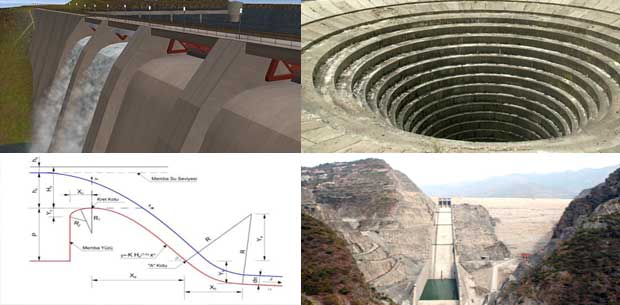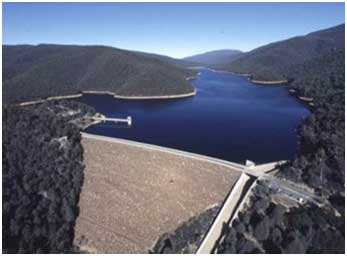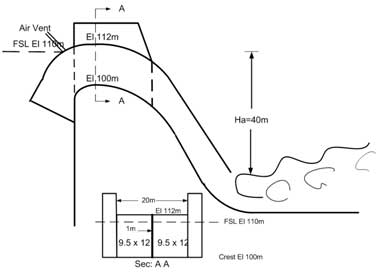
Spillway is one of the structural component of dam that spills the water back into the river so that the water does not harm the dam. There are different types of spillways. Some of them are listed below:
Types of Spillway
In general spillways can be classified into two parts as overflow & channel type on the basis of where it is placed. These two major types of spillways are further classified into sub-categories which are explained below:
Overflow type spillway
The Overflow type spillway is the integral part of the dam and functions as per the dam but lets the water flow over it risk-free. The best example of overflow type spillway is Ogee Spillway.
- Ogee Spillway: It is the overflow type spillway which has a controlled weir and is ogee-shaped(S-shaped) in profile. It is shaped such that it follows the lower surface of a horizontal jet emerging from a sharp crested weir. The pressure at the ogee crest remains atmospheric at the design head. At lower head, the pressure on the ogee crest becomes positive which results into the backwater effect and this backwater effect reduces the discharge while at the higher head pressure on the crest becomes negative causing backwater effect to increase the discharge.
The discharge calculation formula for the Ogee Spillway is:
Q=CLHe3/2
where,
C= f (P, He/H0, θ, downstream submergence)
L= effective width of spillway crest
He= total energy head over crest
Ho= design energy head over crest
Effective width of spillway crest in design is calculated as:
L =L’-2(N Kp+ Ka) He
where,
L’=net width of crest
N=number of piers
Kp= pier contraction coefficient
Ka= abutment contraction coefficient
Channel type spillway
It is the type of spillway that is isolated from the dam. There are different channel type spillways in use. Some of them are explained below in brief:
- Chute Spillway: It is also known as Trough Spillway. The function of Chute Spillway is to prevent damage to the valley walls that could endanger the dams. It consists of steeply sloping open channel which is made up of reinforced concrete slab. The Spillway is sometimes of constant width, but is usually narrowed for economy and then widened near the end to reduce the discharging velocity.

- Side Channel Spillway: It is similar to the chute spillway but the only difference between it and chute spillway is that in a chute spillway, the water flows at right angles to the weir crest after spilling over it whereas in a side channel spillway the flow of water is turned by 90 degrees such that it flows to the weir crest.




